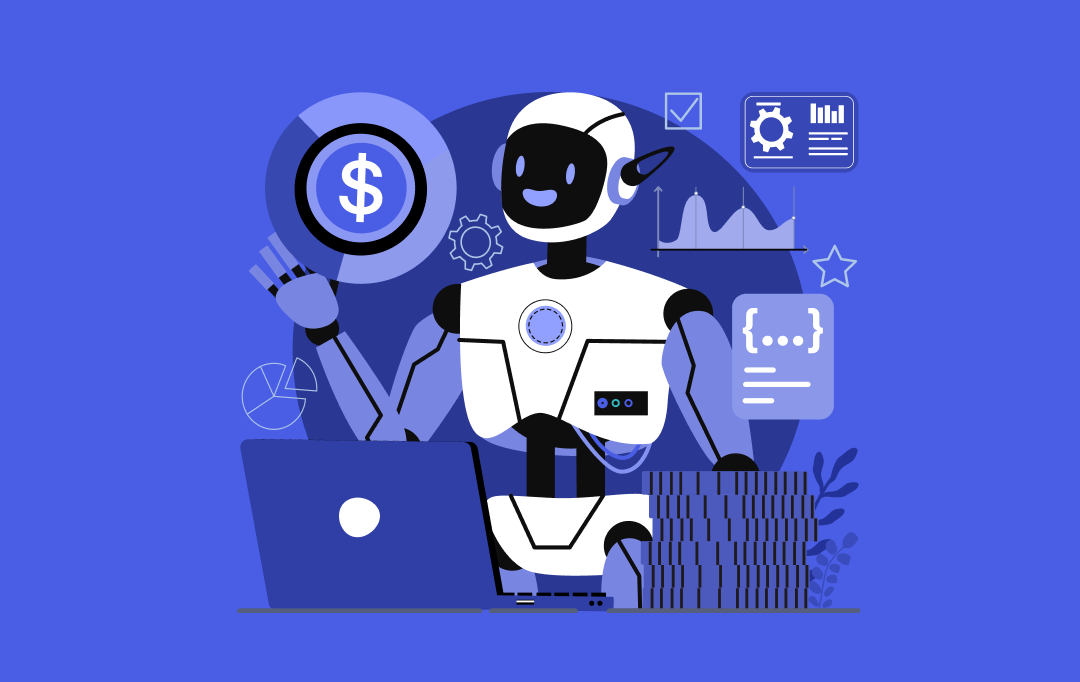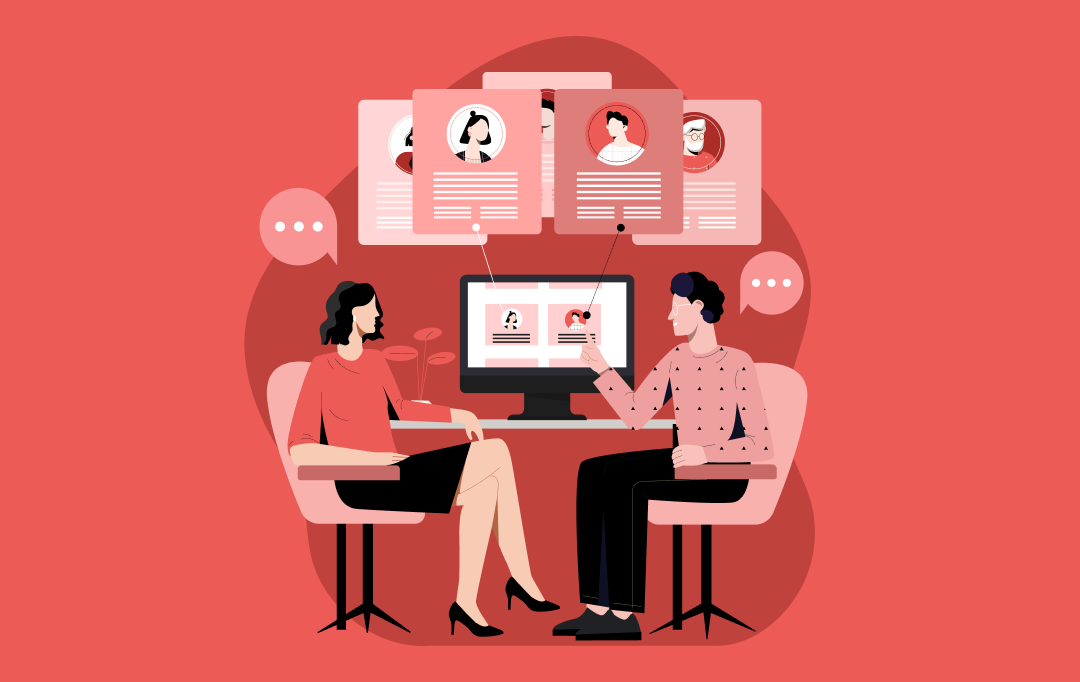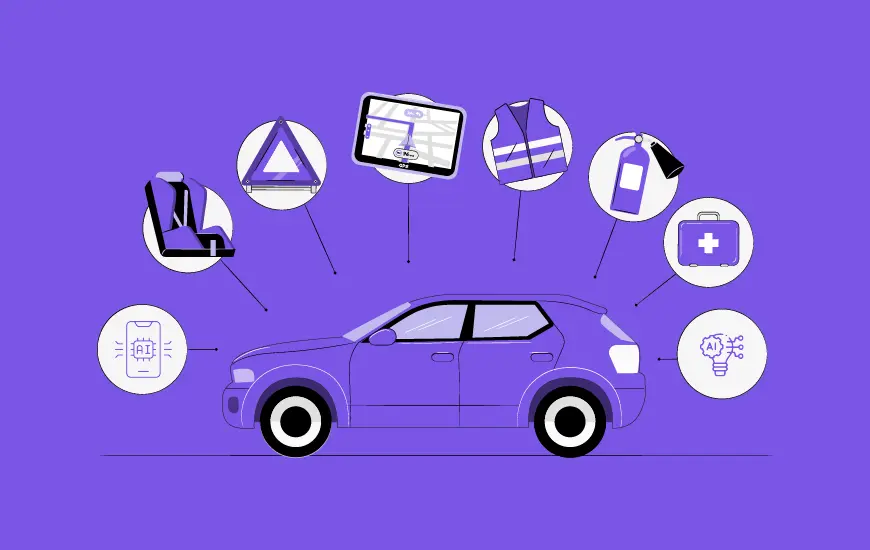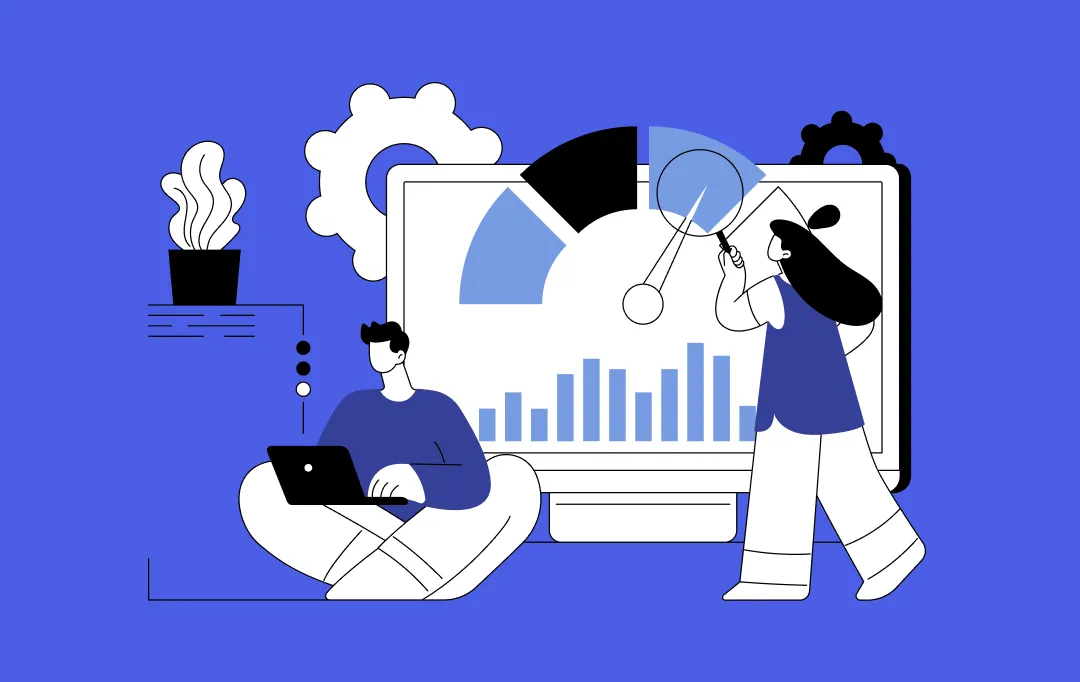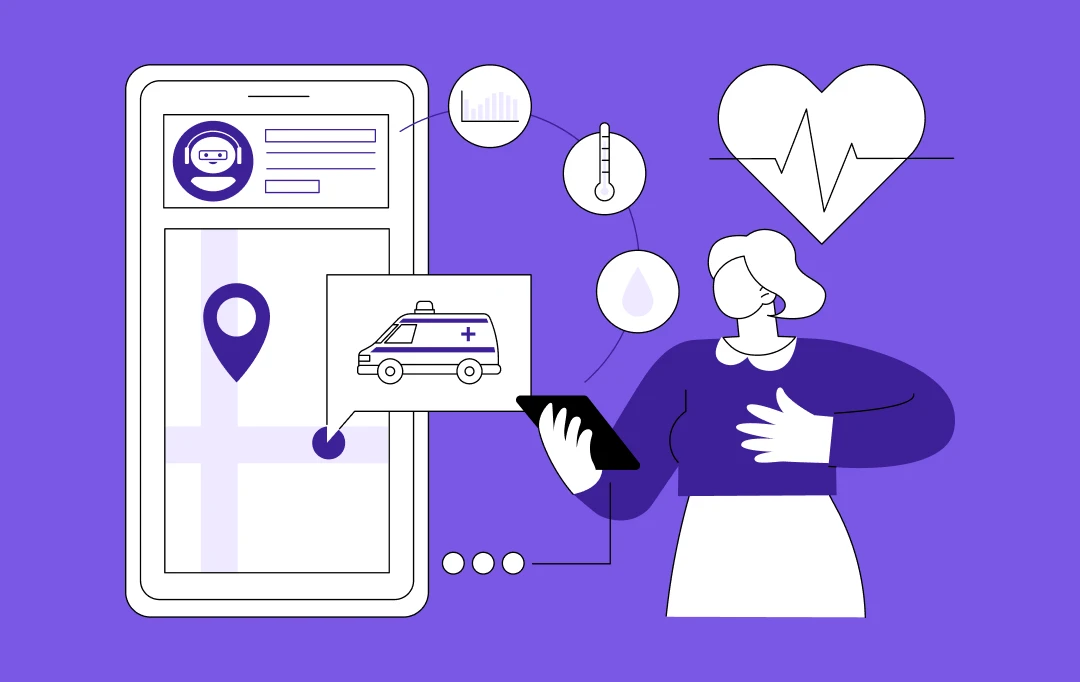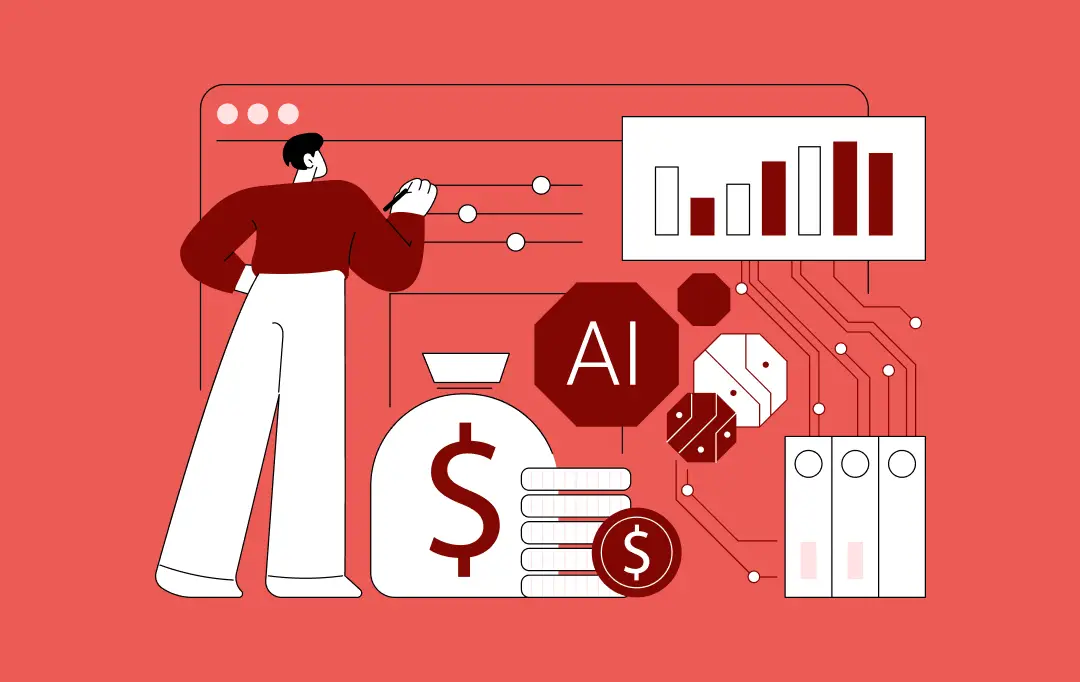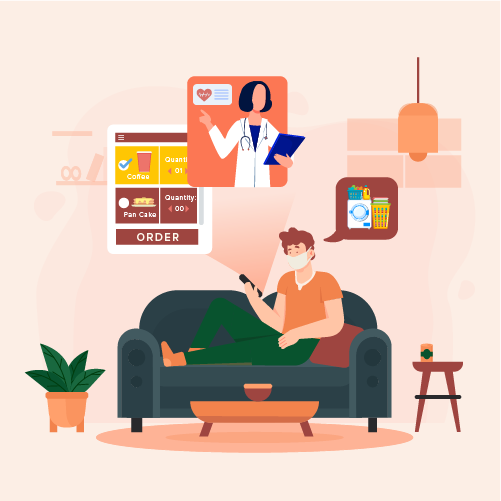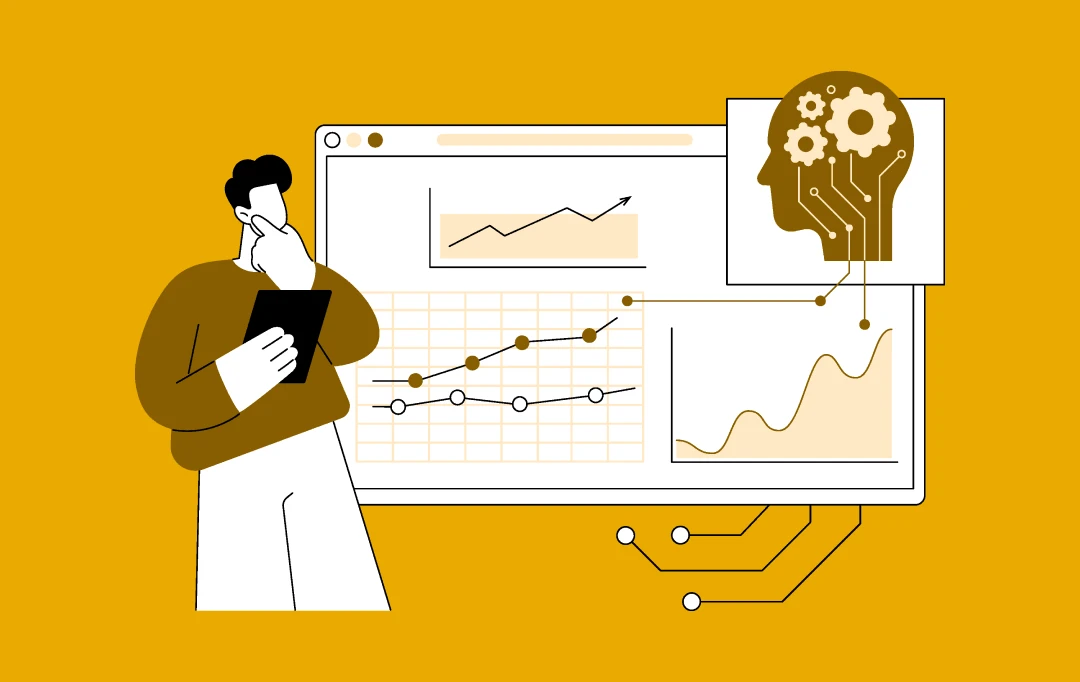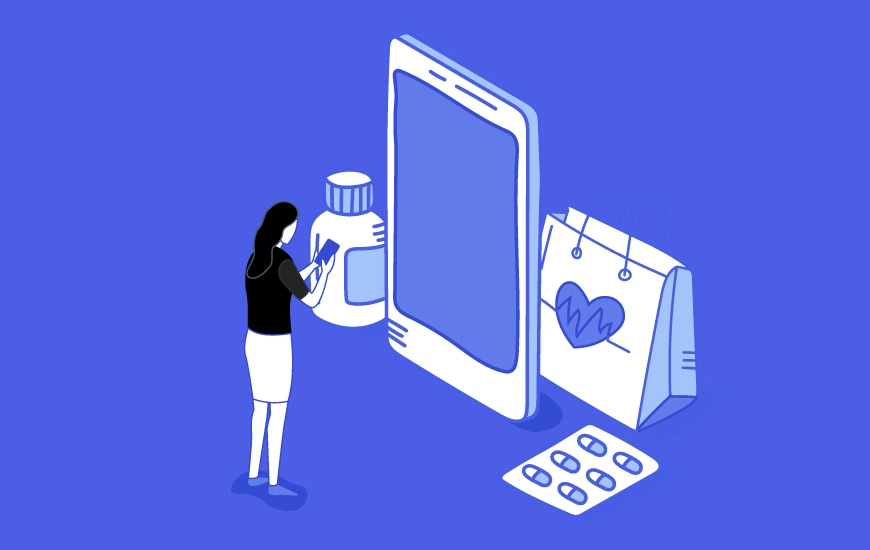- A Glimpse into the Women Health Tracking App Market: Unveiling Opportunities for Businesses
- Benefits of Women Health Tracking App Development for Businesses
- Increased Customer Engagement
- Enhanced Brand Loyalty
- Multiple Revenue Streams
- Valuable Data Collection
- Improved Healthcare Outcomes
- Competitive Advantage
- Types of Women Health Tracking Apps Businesses Can Invest In
- Features of a Robust Women Health Tracking App
- Basic Features of Women Health Tracking Apps
- Advanced Features of Women Health Tracking Application
- Women Health Apps Currently Revolutionizing the Market
- 1. Clue
- 2. Flo
- 3. Natural Cycles
- 4. Eve
- How to Develop a Women Health Tracking App?
- Step 1: Dive Deep into User Insights: Gathering User Intelligence
- Step 2: Design the Framework: Crafting the Blueprint
- Step 3: Prioritize Security and Compliance: Building Trust and Integrity
- Step 4: Develop the User Interface: Focusing on User Experience
- Step 5: Turn Plans into Action: Executing Development
- Step 6: Rigorous Testing and Refinement: Ensuring Quality and Reliability
- Step 7: Launch Strategically: Making a Market Impact
- Step 8: Evolve and Expand: Continual Improvement
- How Much Does it Cost to Make a Women Health Tracking App?
- How Do Women Health Tracking Apps Make Money?
- Challenges Associated with Women Health Tracking Apps
- Data Privacy and Security
- Accuracy of Health Insights
- User Engagement and Retention
- Integration with Other Health Systems
- Cultural and Social Sensitivities
- How Appinventiv Can Enhance Women's Health Tracking App Development
- FAQs
- Q. How much does it cost to develop a women's health tracking app?
- Q. What are the benefits of women's health tracking apps?
- Q. What are the features in women health tracking apps?
As we navigate the twists and turns of modern healthcare, one thing has become crystal clear: women’s health is finally getting the spotlight it deserves. Gone are the days when topics like menstrual health and fertility were tucked away in whispers. Today, they are at the front and center, all thanks to the rise of women’s health tracking apps. These apps are acting as the pathway to progress, offering tools that not only track and analyze but also empower women to take proactive steps toward better health.
The rise of these apps marks a notable shift in how we approach personal health technology. As smartphones become more common, they offer a great opportunity for health monitoring. Women’s health tracking apps harness the power of data and easy-to-use technology to give insights into different health aspects, from menstrual cycles to fertility and overall wellness. Simply put, this shift towards women health tracking app development goes beyond mere convenience; it’s about fostering a culture where people are well-informed and actively manage their health.
Investment in women’s health technology is rising as businesses recognize the untapped potential in this market. The mHealth apps that play a foundational role in healthcare evolution are now a niche product and represent a growing sector that offers substantial returns and the chance to improve lives. The enthusiasm from venture capitalists and major tech companies reinforces the idea that investing in women’s health tech is ethically sound and a smart business move. The timing is perfect, as the growing demand for these apps aligns with a wider shift toward personalized healthcare solutions.
This blog will dive deep into women’s health tracking app development. We will explore what these apps offer, how they are developed, and their impact on the market. This article will provide a thorough overview of the landscape, from the technologies that power them to the challenges developers face and the strategies for success.’
A Glimpse into the Women Health Tracking App Market: Unveiling Opportunities for Businesses
The technology propelling the rise of digital armor for young women is deeply intertwined with advancements in digital health solutions, commonly grouped under the umbrella of FemTech. This technology integration focuses on creating user-friendly applications that offer not just data tracking but actionable insights into women’s health.
These applications employ sophisticated algorithms to analyze menstrual cycles, predict fertility windows, and provide personalized health tips, leveraging the global nature of smartphones to deliver these services directly to users. This technological evolution significantly shifts towards more proactive and preventive health management.
- According to a report from Grand View Research, the market for these innovative health solutions is expanding rapidly. The global market for women’s health app development, valued at $4.85 billion in 2024, is expected to grow at a CAGR of 17.78% from 2025 to 2030 and reach $12.87 billion. This growth is fueled by increasing awareness of women’s health issues, greater investment in health tech solutions, and the rising prevalence of mobile technology in everyday life. As more women seek convenient and effective ways to manage their health, these apps meet an important need, thereby driving market expansion.
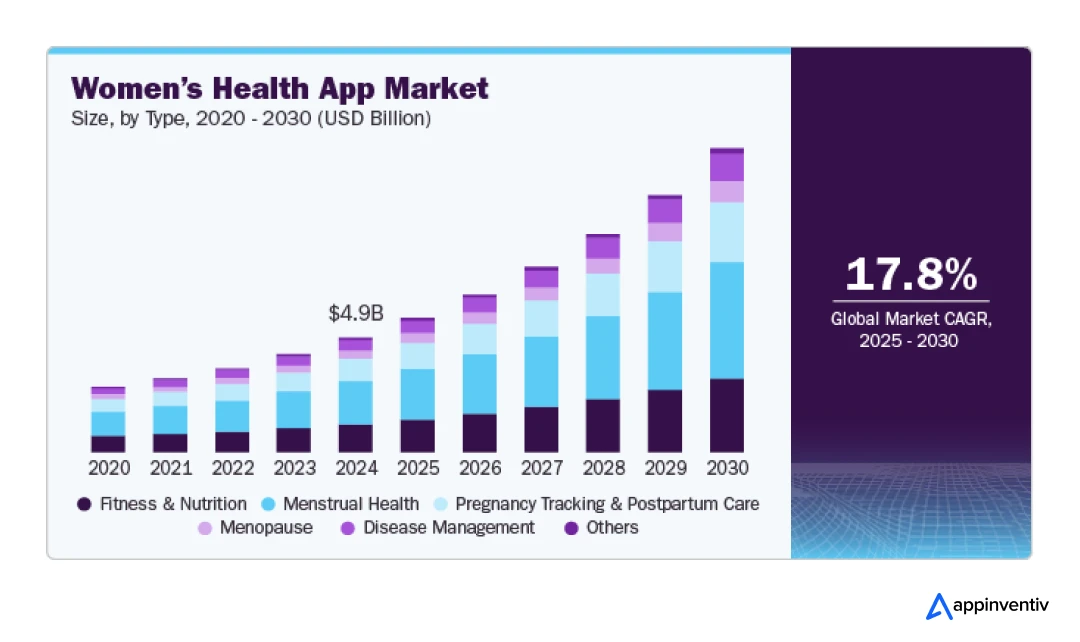
- Recent insights from McKinsey further underscore the growth potential in this sector. According to their research, major users report spending significantly on health products related to menopause and pregnancy, areas where women’s health apps can play a pivotal role. The use of digital tools, including wearable devices that track fertility, is rising, reflecting a broader trend toward integrating digital technology in personal health regimes. This trend points to a growing consumer readiness to adopt such technologies, providing a fertile ground for businesses looking to enter the women’s health market.
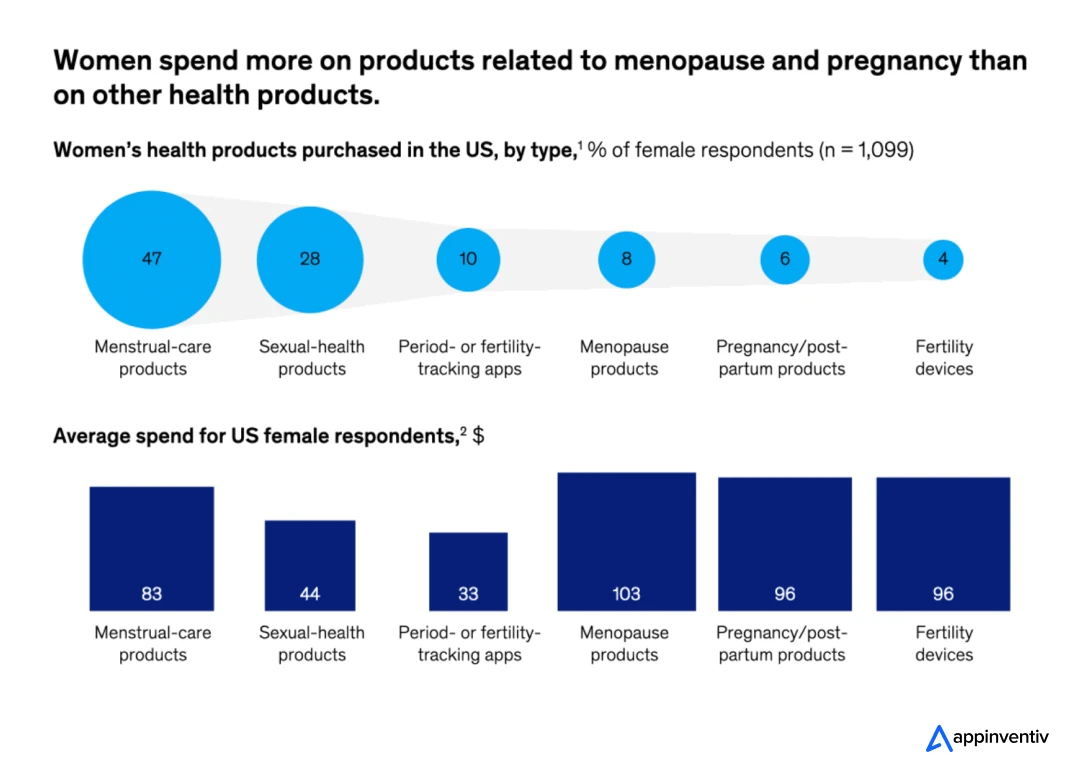
The way forward is straightforward for businesses looking to enter the women’s health app market. Working with an experienced development firm that understands FemTech can greatly improve a company’s chances to capitalize on these expanding opportunities. As these apps become more essential to health management, businesses that invest smartly in women health tracking app development can benefit financially and significantly positively affect women’s health outcomes.
If you are still wondering about the potential benefits of women’s health tracking app development for your business, let’s dive right into the details of these advantages below.
Benefits of Women Health Tracking App Development for Businesses
Health and wellness apps for women primarily consist of period calendars or trackers. Such solutions are intended to help women track their menstrual cycles, predict ovulation, evaluate their moods and overall body health, and prevent them from taking birth control pills, etc. Such apps for women’s health help them reduce the risk of unwanted pregnancies, better understand their bodies, and know how to respond to different health issues.
Furthermore, these women health tracking applications can be used not only by women but also by their physicians and doctors. Doctors may use the data these women health tracking applications provide to understand their patients’ health better. Let’s look at the advantages in detail below:
![]()
Increased Customer Engagement
Developing a women’s health tracking app can significantly boost customer engagement for your business. These apps provide vital health insights and foster daily interaction as users regularly input and review their health data. This consistent engagement keeps your app at the forefront of users’ minds and builds habit-forming behavior, enhancing user retention and loyalty. With features like reminders, health tips, and personalized reports, businesses can keep their users actively involved, leading to higher satisfaction and app usage rates.
Enhanced Brand Loyalty
By addressing specific and often sensitive women’s health issues, businesses can cultivate a strong sense of trust and loyalty among their users. Women’s health tracking apps that offer accurate, helpful, and discreet support can become invaluable tools for their users, enhancing the brand’s perceived value. This trust is crucial in healthcare applications, where users share personal and sensitive information.
Multiple Revenue Streams
Women’s health tracking apps open up multiple avenues for revenue generation. From subscription models and in-app purchases to advertising and affiliate marketing, there are various ways to monetize these apps. Additionally, partnerships with healthcare providers, wellness coaches, and fitness experts can create new revenue channels. These apps also provide a platform to sell related products or services, such as nutritional supplements or personalized health consultations.
Valuable Data Collection
These apps are a goldmine for data collection, providing businesses valuable insights into women’s health trends, behavior patterns, and preferences. This data can be instrumental in making informed business decisions, improving product offerings, and tailoring marketing strategies. Additionally, the anonymous data gathered from these apps can be valuable for research and development purposes, helping to advance women’s healthcare more broadly.
Improved Healthcare Outcomes
By facilitating better health monitoring and management, women’s health tracking apps directly contribute to improved healthcare outcomes. These apps enable early detection of potential health issues, encourage proactive health management, and can reduce the need for costly medical interventions. For businesses, this means playing a part in reducing healthcare costs while also providing a valuable service that can enhance users’ overall quality of life.
Competitive Advantage
In a market flooded with generic health apps, a specialized women health tracking application provides a competitive edge. It allows businesses to cater to a specific demographic with tailored solutions that address unique needs. This specialization can set a business apart from competitors and position it as a leader in the niche market of women’s health technology.
Now that you have a clear idea of the benefits of investing in or building a women’s health tracking app, let’s dive into the various types of women’s health tracking apps that businesses can develop to meet diverse user needs and capitalize on this growing market.
Types of Women Health Tracking Apps Businesses Can Invest In
Today, several apps for women’s health are available, and they are becoming widely popular due to the convenience they offer. Such apps help you put your life on track by monitoring health concerns based on your age, weight, cycle time, flow, fitness target, lifestyle, etc.
Due to the proliferation of smartphones, health and fitness apps are quickly becoming mainstream in the average woman’s app list. The main types of women health tracking apps are as follows:
| Type of App | Description | Business Benefits | Examples |
|---|---|---|---|
| Menstrual Cycle Trackers | These apps help women track their menstrual cycles, predict ovulation, and monitor symptoms like mood changes and physical discomfort. | Engages users daily, fostering brand loyalty and regular use. Offers targeted marketing opportunities for menstrual health products. | Clue, Flo |
| Fertility Apps | Aimed at women trying to conceive, these apps track fertility windows, suggest optimal times for conception, and provide pregnancy planning tips. | Opens up avenues for partnerships with fertility clinics and offers targeted advertising for prenatal products. | Glow, Ovia Fertility |
| Pregnancy Trackers | These apps track the progress of pregnancy week by week, offering information on fetal development, health tips, and reminders. | Attracts a dedicated user base for extended periods, providing sustained engagement | What to Expect, BabyCenter Pregnancy |
| Menopause Apps | Designed to support women going through menopause, these apps provide symptom tracking, lifestyle tips, and community support. | Taps into an older demographic, often overlooked by digital health apps, with potential for health products oriented towards menopausal symptoms. | MenoPro, My Menopause Magazine |
| General Wellness Apps | Focus on overall women’s health, offering features like fitness tracking, dietary guidance, and mental health support. | Encourages holistic health management with diverse revenue streams from ads, subscriptions, and affiliate marketing. | MyFitnessPal, Apple Health |
Features of a Robust Women Health Tracking App
Considering any of the types of apps above, businesses need to integrate a set of features during women health tracking app development that can make their app stand out from the rest. Let’s explore these features in detail below.
Basic Features of Women Health Tracking Apps
Let’s discover the essential components that form the foundation of any effective women’s health tracking app, ensuring ease of use and fundamental health monitoring.
![]()
User Profile Creation
Allows users to create and customize their profiles by adding personal health information and personalizing the app experience.
Cycle Tracking
Enables users to track menstrual cycles, predict ovulation, and log symptoms, helping them understand their reproductive health better.
Reminders and Notifications
Sends timely reminders for medication, fertility windows, or upcoming appointments, ensuring users stay informed and engaged.
Health Insights
Provides analytical insights based on the data entered by the user, offering personalized health tips and reports.
Data Security
Ensures all user data is securely stored and handled, maintaining privacy and trust.
Advanced Features of Women Health Tracking Application
Let’s explore the cutting-edge functionalities that set high-performing women’s health tracker apps apart, enhancing user engagement and providing deeper health insights.
![]()
Integration with Wearables
Connects with devices like fitness trackers and smartwatches to gather more health data automatically, such as heart rate and sleep patterns.
AI-Driven Predictions
Uses artificial intelligence to provide more accurate predictions of menstrual and fertility cycles based on user data over time.
Also Read: How is AI in Healthcare Transforming the Industry?
Community Access
Offers a platform for users to connect, share experiences, and receive support from a community of like-minded individuals.
Telehealth Integration
Allows users to consult with healthcare professionals directly through the app, facilitating easier access to expert advice and care.
Customizable Alerts
Enables users to set and customize alerts according to their health needs and preferences, enhancing user experience.
Machine Learning for Symptom Analysis
Utilizes machine learning algorithms to analyze symptom data and identify patterns, potentially predicting health issues before they become serious.
Multi-Language Support
Offers the app in multiple languages to cater to a global audience, increasing accessibility and user base.
Custom Reports and Export Options
Allows users to generate custom reports about their health data that can be exported for sharing with healthcare providers, facilitating better healthcare conversations.
Interactive Health Education
Provides interactive educational content, such as videos and articles, tailored to the user’s health stage and interests, enhancing knowledge and engagement.
Mood and Wellness Tracking
Integration of features like mood and wellness tracking during women health tracking application development helps users see correlations between their physical health and mental health.
Augmented Reality for Anatomical Education
Uses augmented reality to educate users about their bodies, providing a more engaging way to learn about anatomy and health through smartphones.
Dynamic Personalization
Adapts the user interface and content delivery based on the user’s interactions and preferences, creating a highly personalized app experience.
Behavioral Change Incentives
Incorporates gamification elements like points, badges, and leaderboards to motivate and encourage users to maintain healthy habits and reach health goals.
Advanced Data Analytics Dashboard for Researchers
Offers a sophisticated dashboard for researchers or healthcare providers, enabling them to access aggregated data for studies or improved patient care but with user consent.
Also Read: An Easy Guide to Understand Data Analytics in Healthcare
Voice Commands and Assistance
Integrates voice-enabled commands and virtual health assistants to provide hands-free operation and personalized health guidance.
Women Health Apps Currently Revolutionizing the Market
To create something unique and engaging, you need to do a comparative study of all your competitors in the market. Businesses need to understand the major female health tracking apps that have already succeeded in the market and learn from the wins and mistakes of their competitors. Before diving into the process of women health tracking app development, let’s look at some of the popular women health tracking apps in the market:
1. Clue
Clue is the most popular women’s health app for accurate period monitoring. It is the top-rated period tracker and ovulation app that helps you identify unique menstrual cycle patterns. This women’s health application uses machine learning to predict your periods, PMS, inform you about your fertile and infertile days, and help you avoid unwanted pregnancy. This feature-packed app helps you monitor all the changes in your menstrual cycle in a period calendar, including ovulation, fertility, cravings, moods, and how each of these is linked to your health.
2. Flo
Flo is an AI-based period tracker, ovulation, and fertility calendar used by women across 30 countries. It is known for being a precise time tracker, accurate pregnancy calculator, ovulation calendar, and much more. Flo uses AI in analyzing the data that users enter. Logging consistently ensures that AI gives the most accurate prediction of ovulation, fertility, and overall menstrual health.
3. Natural Cycles
Natural Cycles is a cycle tracker and contraceptive app and one of the leading examples of a thoroughly carried out women health tracking application development process. While most mobile applications related to women fitness tracking allow you to monitor and track your basal body temperature on a regular basis, Natural Cycles is the only one that comes with a basal body thermometer that tests your temperature to one-hundredth of a degree instead of the usual one-tenth. The more you measure, the better the algorithm of the app gets when learning your specific cycle.
It helps women keep a track of their cycles and allows them to choose if they want to avoid pregnancy or plan pregnancy.
4. Eve
Eve was launched in 2015 by a data science company Glow. This period tracking app is loved for its clean interface and unique features such as Cycloscope (it displays your current cycle phase together with possible current health symptoms). This one of the best apps for women’s health also features a large built-in social network where users can share their experience and tips. You can review past periods, menstrual cycles, PMS symptoms and ovulation dates.
How to Develop a Women Health Tracking App?
Developing a women’s health tracking app involves careful planning and execution to ensure the end product is both effective and engaging for users. Here’s a step-by-step guide on how to create an app that stands out in the health technology market, incorporating innovative steps tailored to the specific needs of women’s health management.
![]()
Step 1: Dive Deep into User Insights: Gathering User Intelligence
Begin by conducting thorough market research to understand the needs, pain points, and desires of your target audience. Use surveys, focus groups, and personas to gather insights that will guide the design and functionality of your app.
Step 2: Design the Framework: Crafting the Blueprint
Translate the insights gained from your research into a detailed app blueprint. Outline key features, the user journey, and the interactions that will form the core of the user experience. This blueprint will act as a roadmap for the development process.
Step 3: Prioritize Security and Compliance: Building Trust and Integrity
Ensure your app adheres to legal standards and regulations pertinent to health data, such as HIPAA or GDPR. Design your app’s architecture with robust security measures to protect user data and ensure privacy.
Step 4: Develop the User Interface: Focusing on User Experience
Design a user interface that is not only visually appealing but also user-friendly and accessible. Prioritize intuitive navigation and responsiveness to ensure a seamless user experience.
Step 5: Turn Plans into Action: Executing Development
Begin the actual coding and development phase. Ensure your development team uses clean, scalable, and efficient code. Integrate the front end with the back end and ensure all components work seamlessly together.
Step 6: Rigorous Testing and Refinement: Ensuring Quality and Reliability
During this phase of women health tracking app development, conduct extensive testing using automated tools and real user feedback to identify bugs and areas for improvement. Based on this feedback, iterate on the design and functionality to refine the app before the final rollout.
Step 7: Launch Strategically: Making a Market Impact
Deploy your app in stages, starting with a beta release to gather early user feedback and moving to a full launch. Monitor the app’s performance continuously using analytics tools to understand user behavior and areas for further enhancement.
Step 8: Evolve and Expand: Continual Improvement
Post-launch, keep the app fresh and relevant by regularly updating content, features, and technology. Listen to user feedback and adapt to changing needs and technological advancements to maintain engagement and effectiveness.
After looking into the major phase of women health tracking application development, let’s move ahead and understand the women health tracking app development cost in detail below.
How Much Does it Cost to Make a Women Health Tracking App?
Developing a women’s health tracking app can vary significantly in cost, generally ranging from $50,000 to $300,000 or more, depending on several factors.
The initial estimate provides a broad framework, but the actual development cost of women’s health applications can fluctuate based on the complexity and specific features you choose to include.
The app’s complexity is the main factor influencing cost. For instance, a basic app with features like menstrual cycle tracking and notifications might cost less, while an advanced app that includes AI-driven insights, compatibility with wearable devices, support for multiple languages, and detailed data analytics will require more resources and, thus, be more expensive.
Furthermore, the platforms you choose (iOS, Android, or both) and the need to comply with health data regulations like HIPAA or GDPR also significantly affect the development complexity and the development cost of health monitoring apps for women.
Other factors that determine the price include the uniqueness and sophistication of the app design, the backend infrastructure, maintenance costs, and the location of your development team.
Let us offer you a quick idea on how costs and timelines vary with app complexity:
| App Complexity | Features To Be Included for Developing Such Apps | Estimated Cost of Women Health Tracking App Development | Development Timeline |
|---|---|---|---|
| Basic | Cycle tracking, notifications, simple analytics | $50,000 – $100,000 | 3-6 months |
| Moderate | Advanced analytics, integration with wearables | $100,000 – $200,000 | 6-12 months |
| High | AI insights, multi-platform support, custom design | $200,000 – $300,000+ | 12+ months |
How Do Women Health Tracking Apps Make Money?
Women’s health tracking apps can generate revenue through various streams, turning them into profitable ventures while providing valuable services. Understanding these revenue models is crucial for any business entering this space.
Here are some of the common revenue streams for women’s health tracking apps:
| Revenue Stream | How Businesses Earn Money Through It? |
|---|---|
| Subscription Fees | Users pay a monthly or yearly fee to access premium features such as detailed analytics, personalized insights, and ad-free experiences. |
| In-App Purchases | Offers additional paid features within the app, such as personalized diet plans, fitness coaching, or advanced health insights. |
| Advertising | Generates revenue from ads placed within the app. These can be targeted based on the user’s health data and preferences. |
| Affiliate Marketing | Earns commissions by promoting health-related products or services from partners, like nutritional supplements or wellness programs. |
| Data Monetization | Anonymized data can be sold to researchers or healthcare companies interested in health trends and behaviors with user consent. |
| Paid Partnerships | Collaborating with healthcare providers, fitness experts, and other professionals to offer exclusive content or services. |
Challenges Associated with Women Health Tracking Apps
Women health tracking application development comes with its unique set of challenges that can impact both the launch and the ongoing management of the app. Addressing these challenges effectively ensures the app’s success and user satisfaction.
![]()
Data Privacy and Security
Handling sensitive health data requires stringent security measures to protect user information from breaches and unauthorized access. Ensuring compliance with data protection laws like GDPR and HIPAA is essential, and any lapse can lead to legal repercussions and loss of user trust.
Solution: Implement robust encryption methods, secure authentication processes, and regular security audits to maintain high standards of data protection.
Accuracy of Health Insights
Providing reliable and accurate health insights is critical when building a health monitoring app for women. Inaccuracies in tracking and analysis can lead to users misinforming decisions, potentially affecting their health adversely. Ensuring the algorithms and data inputs are scientifically validated is a significant challenge.
Solution: Collaborate with healthcare professionals to validate data and utilize AI to refine algorithms, ensuring accuracy and reliability.
User Engagement and Retention
Keeping users engaged with the female health tracking app over time is challenging, especially once the initial novelty wears off. Continuous innovation in features, maintaining a seamless user experience, and providing personalized content are essential strategies to enhance user retention.
Solution: Regularly update the app with new features and personalized content, and use push notifications to keep users informed and engaged.
Integration with Other Health Systems
After the women health tracking app development is complete, integrating the app with existing health infrastructures like electronic health records (EHRs) or other medical devices enhances the app’s utility but also presents technical and regulatory challenges. Ensuring compatibility and securing partnerships requires significant effort and resources.
Solution: Establish partnerships with health care app providers and leverage API integrations to ensure smooth data flow between systems.
Cultural and Social Sensitivities
Women’s health topics can be sensitive and vary significantly across different cultures and communities. Developing a culturally sensitive app that is not seen as intrusive or offensive requires careful consideration of the content, marketing, and features.
Solution: Conduct thorough market research to understand cultural nuances and involve community representatives in the app development process to ensure cultural appropriateness and sensitivity.
How Appinventiv Can Enhance Women’s Health Tracking App Development
Appinventiv is well-positioned to help you make the most of the booming women’s health app market. Recognizing the significant role of FemTech in transforming healthcare, we focus on developing apps that prioritize and improve women’s access to healthcare services.
As a top healthcare application development services provider, we have successfully built numerous mHealth solutions tailored to various health needs. Our team has extensive experience creating wellness apps, ensuring your concept reaches a wide audience with effective, custom-designed solutions.
Our experts are equipped with the knowledge and tools necessary for female health tracking application development. They understand the intricacies of the healthcare industry and are skilled in integrating the latest technologies to provide secure, engaging, and user-friendly apps.
Additionally, as a leading Fitness app development company, we stay updated with current trends and regulations in healthcare technology. This allows us to build apps that comply with all legal requirements and are innovative, ensuring your app stands out in the competitive market.
For instance, we recently developed a dedicated health assessment app – Health-e People, to integrate and monitor data from over 200 healthcare devices and apps in one central platform. This innovative solution not only simplifies personal health management but also enhances connectivity between users and medical caregivers. By providing a single point of access for health data, Health-e-People facilitates more informed decisions and fosters a community-centric approach within the expansive healthcare industry.
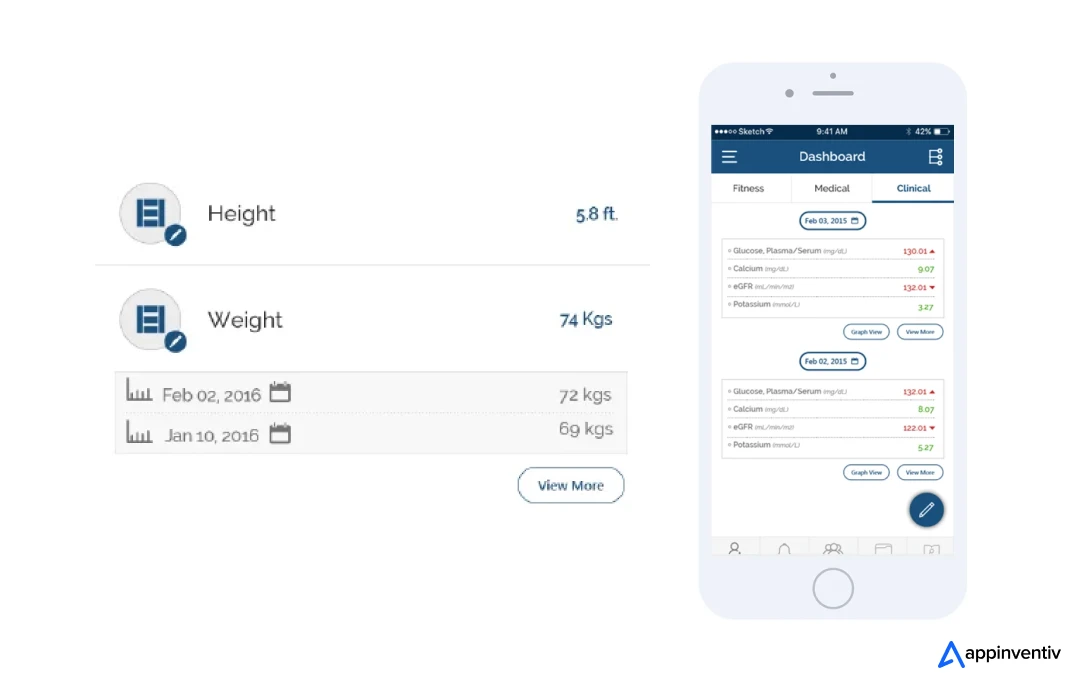
Similarly, our other healthcare solution, Soniphi, revolutionizes personal wellness by harnessing the science of Bio-Acoustics. This mobile app analyzes 94% of vocal information to deliver comprehensive well-being reports, making it a pioneering tool in health diagnostics.
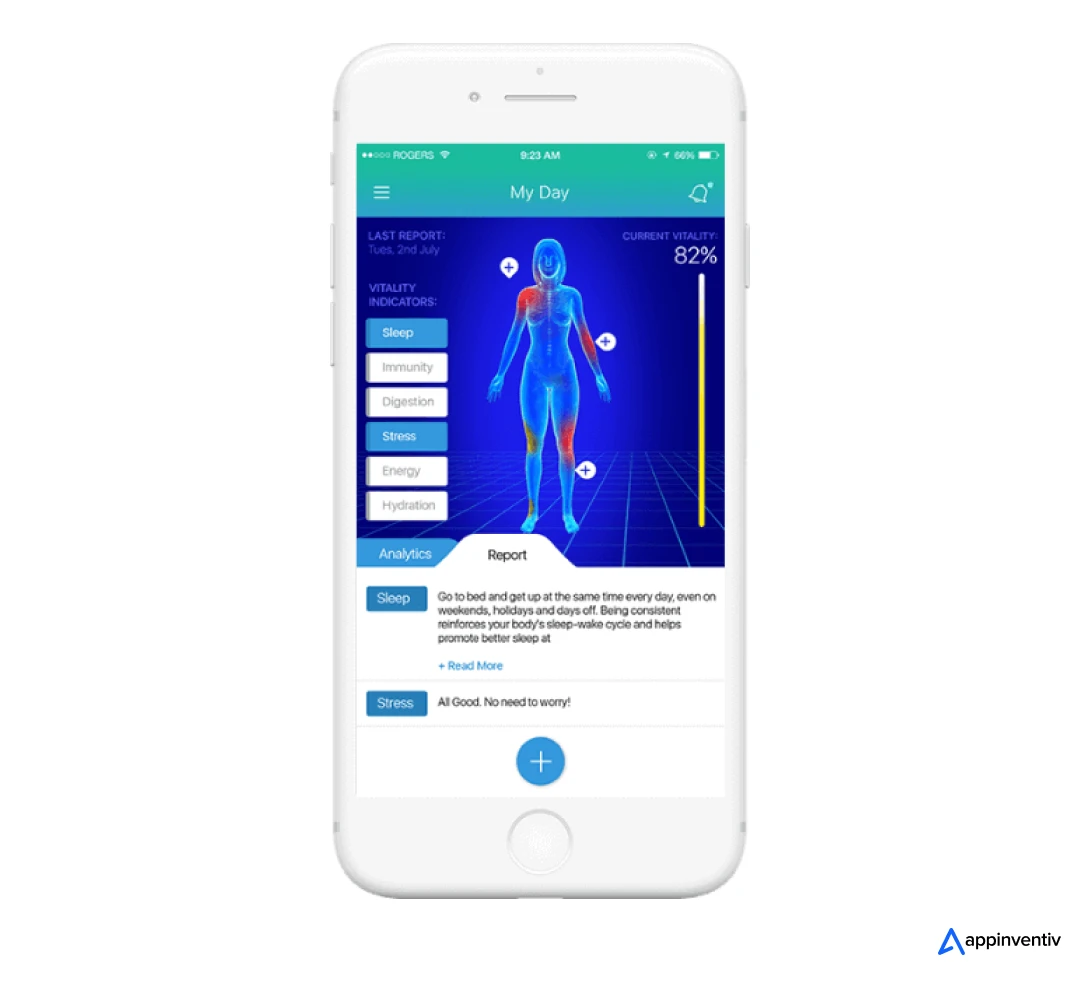
Contact us to partner with a team with the capability and dedication to transform your vision into a reality that benefits millions of users.
FAQs
Q. How much does it cost to develop a women’s health tracking app?
A. The women health tracking app development cost can vary widely, typically ranging from $50,000 to over $300,000, depending on the app’s complexity and specific features. Basic apps with simple tracking and notification functionalities can be on the lower end of the cost spectrum. In contrast, more sophisticated apps featuring advanced analytics, AI capabilities, and multi-platform support might require a more substantial investment. Connect with a leading telemedicine app development company today to get the complete cost estimate.
Q. What are the benefits of women’s health tracking apps?
A. Women health tracking app development provides several benefits for businesses. These apps create significant opportunities for targeted marketing, as businesses can tailor their products and services to their users’ specific health needs and cycles.
The detailed data collected from these apps also enables companies to understand and predict consumer behavior more effectively, increasing user engagement. Furthermore, these apps open up various revenue streams, such as subscriptions and in-app purchases, enhancing the potential for monetization.
Q. What are the features in women health tracking apps?
A. Women’s health tracking apps incorporate various features designed to cater to different aspects of health monitoring. Basic features typically include menstrual cycle tracking, symptom logging, and fertility predictions. More advanced apps might offer personalized health insights, integration with wearable devices, AI-driven predictions for fertility and menstruation, and features for pregnancy tracking.
Many apps also include forums or community support systems where users can connect and share experiences. Additionally, robust security features to protect user data and ensure privacy are critical for maintaining user trust and compliance with health data regulations.


- In just 2 mins you will get a response
- Your idea is 100% protected by our Non Disclosure Agreement.
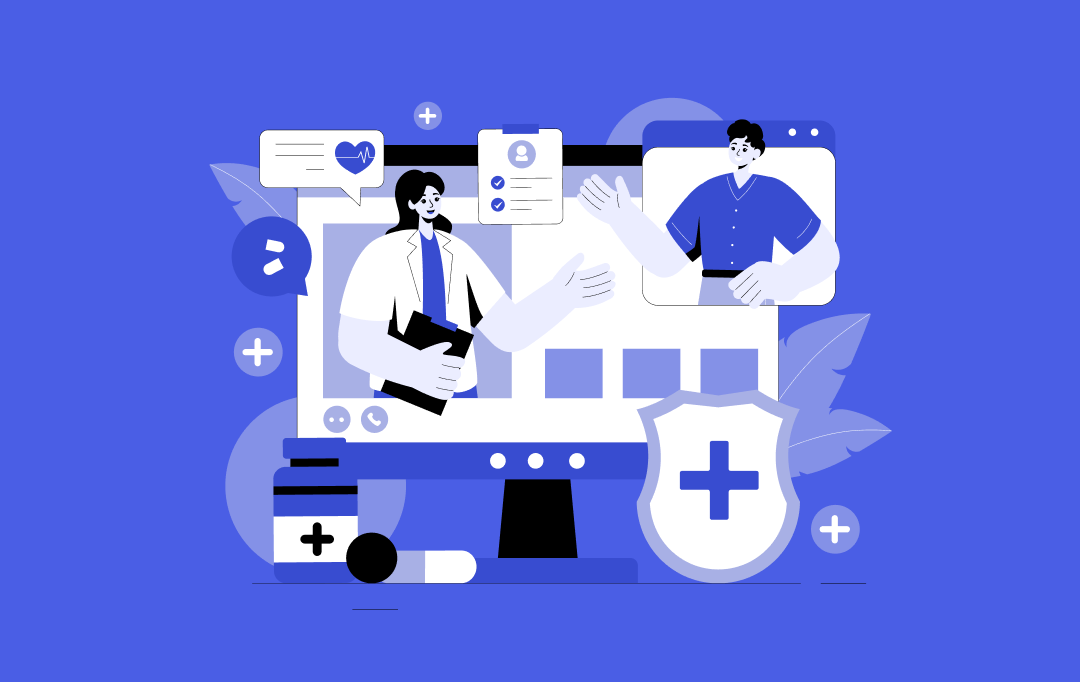
Identity and Access Management in Healthcare: Core Components, Challenges, and Best Practices
Key Takeaways Healthcare runs on trust, and Identity and Access Management is what keeps that trust intact by protecting every login, record, and device. A modern IAM system does more than secure passwords, it connects people, systems, and data safely across hospitals and clinics. AI and automation are changing how IAM works, spotting risks faster…

How Telemedicine is Breaking Barriers in Mental Health Care Access and Delivery
Key Takeaways Telemedicine is helping healthcare systems close gaps caused by clinician shortages, long wait times, and limited physical infrastructure. Virtual mental health care boosts access beyond geographical barriers while reducing no-shows, travel barriers, and scheduling conflicts. Hybrid models, remote monitoring, and AI-supported assessments make care more continuous, proactive, and scalable. Partner with Appinventiv to…
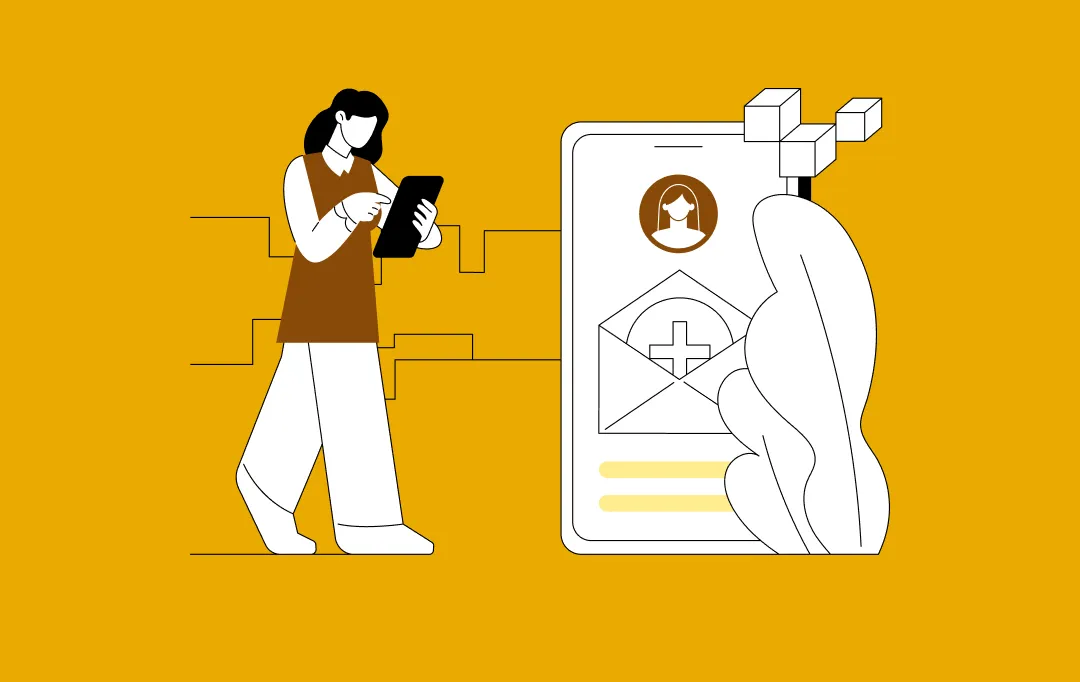
Chiropractor App Development: Complete Guide for Clinics
Key Takeaways Chiropractor apps succeed when they solve real clinic workflows, not just scheduling and bookings. Choosing the right app type early prevents data silos, rework, and scalability issues later. MVP-first development helps clinics validate adoption before investing in full platforms. Compliance, integrations, and analytics must be built in from day one, not added later.…
